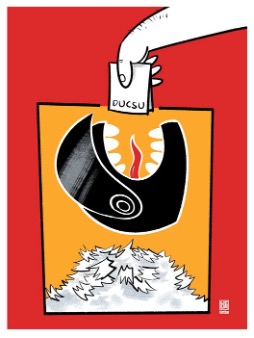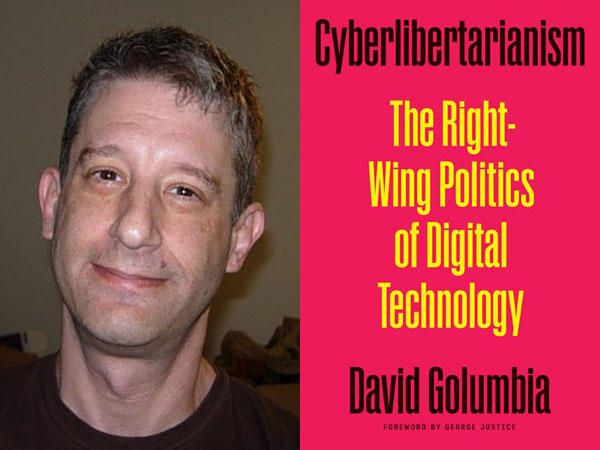This text is published as part of a special b2o issue titled “Critique as Care”, edited by Norberto Gomez, Frankie Mastrangelo, Jonathan Nichols, and Paul Robertson, and published in honor of our b2o and b2 colleague and friend, the late David Golumbia.
There Are No Good Games: Dismantling Canonicity in Videogame Studies
Rian C. Johnson
Broken Machines: An Ugly Ontology of the Videogame
Videogames are bad objects.[1] They proliferate hidden structures of control, concentrated power, and inequity (Golumbia 2009b, 154). They are vehicles for the ideology of neoliberal capitalism (Jagoda 2020, 44). They are the “paradigmatic media of empire,” and they operate as the “ideological avatar of play,” insisting on a correct way to play that isn’t even really play at all (Dyer-Witheford and De Peuter 2009; Boluk and LeMieux 2017, 281). They promulgate rhetorics of destruction, conquest, exploitation, colonization, and violence (Mukherjee 2018; Harrer 2018; Dooghan 2019). They are a medium steeped in misogyny and the objectification and aestheticization of women (Gray, Voorhees, and Vossen 2018; D. J. Leonard and Kishonna L. Gray 2018; DeWinter and Kocurek 2017). They minstrelize people of color when not erasing them entirely (Everett and Watkins 2008; D. J. Leonard and Kishonna L. Gray 2018; D. Leonard 2003). And they are inextricably embedded in the American military-industrial complex (Ivory 2015).
Videogame culture is bad; it is “dark” and always has been (Paul 2018, 2). Popular videogame culture proselytizes the most toxic logic of the videogame in all its noxious glory. From booth babes to in-game harassment to eSports to GamerGate to the racist frenzy that forced a Japanese politician to declare official neutrality towards a Canadian-produced Samurai game in the Summer of 2024, videogame culture is toxic to everyone who sets foot outside of its punitive magic circle (Cryer 2024). The culture is the circle, and the circle is toxic. The magic circle of popular videogame culture is the proverbial embodiment of Hidetaka Miyazaki’s poisonous swamp, and like “hardcore” logic of Miyazaki’s Souls-like games, it reproduces the hidden hierarchy created through pseudo-meritocracy that ensures those who begin on top remain on top (Paul 2018, 13).
The videogame industry is very, very bad. Born in the laboratories of Brookhaven and MIT, it reached maturity amid the capitalist parable of Atari that began with dorm room piracy, snowballed into the Magnavox vs. Atari lawsuit, and ended under concrete in the New Mexico desert. From Atari to Nintendo to Blizzard, the development of videogames has been inseparable from the exploitation, harassment, and abuse of workers: fan laborers, outsourced grunt coders, and white-collar American women in Irvine, California, alike (Bulut 2020). The videogame industry is both an arm of the American military entertainment complex and an agent of warfare in its own right (Milburn 2018, 173; Dyer-Witheford and De Peuter 2009, 98–105).
Even videogame scholarship has its problems. The gendered undertones of the Narratology vs. Ludology debates, a tendency to smooth over unseemly edges, a longstanding aversion to politics, ludo-orientalist and techno-orientalist tendencies, the murky conflation of game development and critical game studies, even a cursory survey of the field indicates that it is far from tidy. Despite this mire, the field is also always attempting perpetual normalizations in the form of theories, methods, actions, and, indeed, canons. And yet, lest negativity be misconstrued as hatred, as I write this critique, like so many others, I am simultaneously producing works arguing for the liberatory, radical, anamorphic, ameliorative, or at the very least, harmless potential in videogames. I argue, however, that if videogames offer us any chance or experience of liberation from the oppressive weight of late capitalism, it is as a glitch, a bug, a tactical action informed either by hybridity, a reparative reading, or an oppositional gaze. Left to their own devices, videogames will not bring about a revolution; they will dehumanize global workforces through a simulation fever of ludic optimization.
By nature, videogames are part and parcel of computation. Videogames are, after all, just software. If, as Tara Fickle poses in the Race Card, Eurocentrist and white supremacist cultural frameworks position Eastern cultures as ludic mirrors of Western culture, then videogames are the ludic mirror of functionalist software (Fickle 2019, 113–37). They are one and the same, operating under different mythologies. Stephanie Boluk and Patrick LeMieux suggest that if one gets close enough to the game, it ceases to be one (Boluk and LeMieux 2017, 287). Up close, all is reduced to computation.
David Golumbia wrote that “computation is not a neutral technology; it is a means for expanding top-down, hierarchical power, for concentrating rather than distributing” (Golumbia 2009b, 151). It is perhaps easy to imagine macro-level computational infrastructures striating and concentrating power through systemic mechanisms of economic, political, and social control. However, it’s harder to imagine the logic of computationalism at play in our everyday micro-encounters with computer technology, especially the kind disguised as play. If I was once told that Golumbia was not really a videogames scholar, it is because he was a scholar of computation and software, the latter of which videogames are but one variety, like word processors, web browsers, and media players.
As software, videogames operate as mechanisms for organizing power (and often towards the end of producing labor).[2] On games, Golumbia wrote that “within a wide variety of computer games, one can see a process exactly isomorphic to such software applications, in which quantified resources are maximized so that the player can win the game.” These games, he contended, “reveal exactly the oligarchical-monopolist, Statist, even fascist politics at issue throughout the computerized world” (Golumbia 2009b, 135). Videogames both materially concentrate their operational powers at the hidden level of the code and offer a simulation of power concentration to players through an interface essentialism that obscures everything that the player does not control. Like computers, videogames are inherently ideological objects. They are immersive, interactive, fictional worlds that invite simulational, speculative, and parasocial thinking on the part of players and, at the same time, mask the mechanics of their own functionality and material composition, projecting outward to the surface only that which is desirable, accessible, pleasurable, fun, interesting, exciting, or entertaining when what lies beneath is always, and only, binary code.
If videogames are indeed bad, can they be fixed and made better? Can the videogame be redeemed? Can it be reborn anew, as it should have been, as factions of the independent and avant-garde games movements strive towards? No, nor should they be. Every attempt to reform the videogame reproduces in some other iteration what was problematic to begin with, simply shuffling its contents around and forcing the form’s most toxic ooze out of a different orifice. All we can do as game scholars and game players is confront them as they are and accept them for it. This is, of course, a monumental undertaking. Within the scope of this work, however, is one argument that I hope will serve as a small but necessary cog in the greater mechanism of critical videogame studies.
If we are to acknowledge videogames as bad objects, we must stop trying to salvage our favorites among them, imbuing them with the nullifying powers of aestheticization in the market economy of cultural capital. We must cease construction on and dismantle the foundations that have already been laid for the “canon” of videogames that implicitly shapes videogame studies. Multiple scholars warn of the increasing stagnation, narrowness, and coalescence of game studies (Gekker 2021; Deterding 2017; Murray 2018; Phillips 2020; Paul 2018). They are correct. To begin to remedy this pressing threat, we must surrender our attempts at mimicking the cohesion of other fields of textual study in desperate attempts at legitimization or separatism. Despite the best efforts of videogame studies’ most prominent scholars to prevent the field’s “colonization” by literature, film, or visual studies, it has ultimately colonized itself anyway (E. Aarseth 2001).
Almost twenty-five years after the discipline’s formal opening ceremony, videogame studies has colonized itself by promoting the hierarchical, bourgeois, and ultimately counterproductive economic logic of cultural capital. By arguing fervently for the legitimization of the videogame as an artistic, aesthetic object imbued with cultural capital, the videogame has been not only divorced from its origin as software but from the problematics of computationalism writ large. The result is the implementation of a logic of canonicity within videogame studies, culminating in the uneven allocation of cultural capital and the imposition of yet another layer of hierarchy upon objects that are always already incarnations of concentrated, hierarchical power.
I contend that this hyperconcentration of hierarchy has created an intellectual choke point. Only the deconstruction, dismantling, and destruction of the extant canon of videogames can correct already-established trajectories of concern within videogame studies and cultivate a freer, more diverse, and more productive future for the study of videogames. A game studies discourse grounded in the deeply flawed nature of all videogames, can more easily describe their reparative potential than one couched in terms of “good” games, “bad” games, “real” games, and “junk” games.
Culture, industry, and scholarly toxicity aside, videogames are still tricky, “grotesque” objects. They are profoundly unstable commodities and objects. Like all new media, particularly those associated with analog gaming (and thus also with gambling), the videogame was born into a marginalized and subordinate status within the popular media landscape (Kocurek 2016). Outside of their hegemonic origins in the political and technological realms, videogames have an infamously low standing in the social and cultural hierarchy. Even if, as so many critics have argued, the videogame has or will soon achieve cultural and artistic legitimacy, this legitimacy is still largely meaningless outside of academic, industry, and entertainment gaming cultures. It should, moreover, already be clear that we cannot expect videogame culture to improve the medium’s standing in general culture.
Dismissal, denigration, and disinterest in videogames as a medium still pervades Western cultural sentiment. In 2023, 13-year-old Willis Gibson became the first human recorded to “beat” Tetris, a typically unending and thus unbeatable game (Mohtasham 2024). This accomplishment is remarkable in terms of gaming as a hobby, sport, practice, and field of study and made more so by the roughly forty years between the game’s creation and the event. One would be hard-pressed to think of many other games, particularly as ubiquitous as Tetris, that required forty years of global effort to beat. And yet, Gibson’s accomplishment was overshadowed in the news cycle by a single snide remark from a Sky News anchor three weeks later (Rogers 2024).[3] John Walker’s Kotaku article from October of 2024 also iterates this point: Walker asks one simple and critical question about the failure of a 400-million-dollar game, “Sony’s Concord might be the biggest entertainment failure of all time, so why wasn’t it news?” (Walker 2024). Indeed, outside of Kotaku and other popular gaming presses, it wasn’t. However, the news cycle at that same moment in time did focus on a 200-million-dollar box office flop. [4]
A lack of cultural capital is not the only way videogames have a unique relationship to the dominant culture. Like film, the history of videogames is filled with legends of lost, damaged, or unfinished games. Lost media is a feature rather than a bug in the production and circulation of the videogame, which is native to digitized late capitalism. From development to production, games have a “limited lifespan” enforced by interindustry apathy towards data preservation, techno-industrial practices of planned obsolescence, and the generational cycle of console development (Newman 2012). This ephemerality is reinforced by economic systems of release, trade-in and used sales, intellectual property laws, region-locking, digitally native releases and updates, the politics of backward compatibility, and finally (outside even of the control of publishers, manufacturers, or capitalism itself) bit rot. While bit rot and data discarding may be the only empirically objective factors currently contributing to the lifespan of the videogame, their effect is exacerbated by the industry. Videogames are a mortal medium.
I am not arguing that this dismissal, disinterest, or resignation to decay is correct, good, or culturally beneficial. I am in firm agreement with Shira Chess and Mia Consalvo’s sentiment that “the future of media studies is game studies,” not because of some unique, essential power of the videogame to eclipse and supplant all other media, but because “as convergence culture becomes less of a special case and more of an everyday reality, the medium itself matters less” (Chess and Consalvo 2022, 160). Rather, I argue that the marginalization of video games as a form has not ended in mainstream culture, at least not yet. No matter how many canons have been constructed by games scholars, journalists, developers, or archivists, and how many treatises on games-as-art those same demographics publish, the game has not been elevated to an equal cultural evaluation as other, older mediums, including those that historically faced the same hurdles such as the novel, the film, or the television series. As such, these processes have accomplished little and have only limited knowledge production within game studies.
I can’t deny that, in my day-to-day life, a videogame canon is appealing. Subjectively, perhaps the driving impetus of this article stems from my own disagreement with those games that have been deemed canonical within videogame studies. However, it is by being earnest about such sentiments that the more significant issue becomes visible. As John Vanderhoef argues, following Bourdieu’s work on cultural capital, videogame canons are the product of “taste cultures,” in which the taste of dominant groups shapes the perceived importance, legitimacy, and material value of individual cultural artifacts characterized as videogames (Vanderhoef 2012). Moreover, as Glas and Von Vught demonstrate through practical experience, these dominant groups are almost always white, male, cis-gendered, and heterosexual (Glas and van Vught 2019, 9). While I do not meet all of these criteria, I meet most of them. Thus, I must also recognize that the imposition of my own fantasy canon on the field at large would be nothing more than the slightest alteration of who exactly the dominant party is. Instead of canon reformation, I argue for self-awareness. I argue for the acknowledgment that it is not the current canon that is bad or even current games that are bad, but that these problematics or “badness” are inherent attributes of the videogame. We must instead work with them rather than fruitlessly attempt to breed out these sine qua non traits.
In short, this negativity is not an argument for the obliteration of the videogame in some formalist eugenics any more than it is a call for the obliteration of any and all media that bear some problematic origin (as so many do). Rather, it is a reminder that the videogame was born in a network of power, politics, economics, and Empire, and acts of reclamation, redemption, subversion, or even radical liberation attempted with or through the videogame must neither set aside nor willfully ignore that origin. If we are to continue to study videogames, and if they are to be recovered, redeemed, or even simply neutralized, we must acknowledge their faults.
The Invisible (Master) Hand: Of Canons and Videogames
The current videogame studies canon is a fluid collection of works imbued with exceptional levels of cultural capital, and, like all canons, it does not really exist. There is no stone tablet engraved with the words World of Warcraft, Grand Theft Auto, EverQuest, Tetris, or the Sims preserved in the basement of the Strong Museum of Play, nor even the Library of Congress. The videogame canon is, as John Guillory wrote of the literary canon, “an imaginary totality of works” (Guillory 1993, 30). And yet, “what does have a concrete location as a list…is not the canon, but the syllabus,” and “every construction of a syllabus institutes once again the process of canon formation” (Guillory 1993, 30–31). Like literary syllabi, game studies syllabi certainly exist, and the games on them are, more often than not, canonical games by virtue of their citational, instructional, and analytic repetition. Game studies, like film and literature, shapes its canon through material acts of scholarship, research, theorization, and dissemination. Jonathan Frome and Paul Martin consider the five games listed above canonical through a disproportionately high citation frequency in the two most prominent game studies journals (Frome and Martin 2019, 6). Published in 2019, Frome and Martin’s study is profoundly limited in that it only surveys two journals, disregarding published monographs, edited volumes, and not exclusively game-focused journals. However, even in this microcosmic analysis, evidence of disproportionate citation and, thus, canonization is immediately evident. In 2017, two years before Frome and Martin put the word “canon” to print, Coavoux, Boutet, and Zabban gestured towards the presence of a canon in videogame studies. Yet, they argued against it without ever actually using the word, instead decrying the harmful limitations of “selective focus on a few particular games” (Coavoux, Boutet, and Zabban 2017, 573). While I agree with Coavoux et al. in positionality, I insist on calling a canon a canon, because only by doing so can we access the depths of its potential harm.
If videogames are inherently problematic, so are cultural canons. Canons are hegemonies that confer cultural dominance upon a particular collection of artifacts. Hegemonies, however, are not static. Canons are lived hegemonies, and “a lived hegemony is always a process…it is a realized complex of experiences, relationships, and activities with specific changing pressures and limits” (Williams 2009, 112). They necessitate relationships of domination and subordination, and the dominant, in this case, is manifest in what is culturally accorded the status of art or literature, creating the familiar dichotomy of high and low culture or the distinction between art and culture (Williams 2009, 110). As Williams suggests and Liam Dee expands on in Against Art and Culture, “art and culture are thus clearly the concepts of human expression, transcending rational or natural dictates, but they have an important distinction. One makes this expression extraordinary [art]. The other makes it ordinary [culture]” (Williams 2009, 145; Dee 2018, 15). That is, art and culture are the same thing inside different rhetorical frames, and thus why Dee refuses the separation between them and instead writes against “art/culture” as a dyad “to make explicit the shared qualities of ‘high art’ and ‘popular culture’…and make clear that I am not referring to ‘skill’…nor an amorphous ‘way of life’” (Dee 2018, 17).
One of the cultural frames that enforces this false dichotomy and hegemonic relationship is that of the canon. For John Guillory, “the problem of what is called canon formation is best understood as a problem in the constitution and distribution of cultural capital, or more specifically, a problem of access to the means of literary production and consumption” (Guillory 1993, ix). This is simply another means of describing Williams’ hegemony in which certain objects are attributed higher values of cultural capital than others and accordingly venerated, elevated, and distributed in controlled or institutional contexts. Ultimately, canonicity is intrinsically a problem of inclusivity and diversity, for “canonization of a work is nothing but the affirmation of the social values expressed in the work” even when that affirmation is hidden beneath a veneer of artistic aestheticization. As such, the social values expressed in canonical videogames (and indeed all videogames as pieces of software) are hierarchy, exclusion, and dominance (Guillory 1993, 270).
While Guillory is not explicit in attributing the intentionality of canon formation to any individual or system, I would like to posit here that the process of canonization that has been churning in game studies for the last twenty years has been enacted through what Simone Winko theorizes as an “invisible hand.” Hans-Joachim Backe translates and synthesizes Winko’s theory as “a process in which countless individual (micro-level) actions—which may have altogether different goals—will result, in conjunction, in the (macro-level) phenomenon of canon formation” (Backe 2015, 11). In this light, canon formation is not enacted singularly or with necessary intentionality. Certainly, scholars’ selection and valuation of texts are intentional, but their usage in the canonization process is not. Canons are constructed through evaluation, and for literature, “evaluations can influence the act of writing either beforehand…or during the writing process” and are made by “literary mediators…television and radio producers…literary critics, scholars, and teachers” with the latter operating in the mode described above by the decision “to give the text more or less space” or “other works whose values have already been defined are used as points of comparison” (von Heydebrand and Winko 2010, 225). In what follows, I would like to briefly survey three significant moments of interaction between this invisible hand and the game studies canon that served to establish, legitimize, and reformat it over the nearly four decades since the field’s foundation. These moments are, chronologically, the beginning of videogame studies, the height of the videogame legitimation debate, and the recent (ironic) dominance of “independently developed” games.
In the primordial moment, 1985 and 1986, respectively, Mary Ann Buckles and Brenda Laurel separately and coincidentally completed the first videogame studies dissertations long before videogame studies existed. When Buckles and Laurel were researching and writing about interactive narratives within videogames, they were doing so within the German Literature and Theatre departments, respectively. Working without precedent, they established the first approaches to videogame analysis, and, with them, which videogames provided the most productive analytical fodder. Thus, they also established which games would become early canonical texts.
Buckles’ dissertation is a close reading of the storied text-based role-playing game Adventure. In her introduction, Buckles delineates her area of study, distinguishing Adventure from contemporary arcade games: “Let me first emphasize what Adventure and other works of interactive fiction are not: they are not video arcade games. They do not resemble games like Donkey Kong, Space Invaders, or Pac-Man, which require good hand-eye co-ordination and quick physical reactions” (Buckles 1985, 6). Notably, Buckles does not disvalue “video arcade games” or place them in a value hierarchy with “interactive fiction” but rather creates a taxonomy based on the skills and actions required to play.
Laurel creates a different taxonomy that, while divided along similar lines as Buckles’, introduces an element of hierarchy in its teleological orientation. Laurel’s primary area of study is what she calls “interactive fantasy systems,” which produce “interactive dramas,” a “first-person experience within a fantasy world, in which the user may create, enact, and observe a character whose choices and actions affect the course of events just as they might in a play” (Laurel 1986, 10–11). Her two primary examples are Zork! and Star Raiders, which both allow “the user to participate in the fantasy world as an active character” (Laurel 1986, 86). Arcade games are characterized as “antecedents to interactive fantasy” or “poetic interactive works” that generate affective experiences for the player but do not integrate the player into the world (Laurel 1986, 19–20). While Laurel does not position this class of “poetic interactive works” as oppositional to or less than “interactive dramas,” the connotation of antecedent implicitly argues for an evolutionary view of games in which the latter represent the more evolved, more complex and more capable (and thus more valuable) form of the former, creating a hierarchy between them.
The establishment of both systems of taxonomy fragmented the vast body of media called video or computer games. From the starting point of Buckles’ analysis, Adventure has become a canonical text, representative of the literary qualities of the videogame.[5] As videogame studies, videogame history, videogame culture, and videogame development influence one another in a digital feedback loop, Adventure has remained relevant and briefly achieved prominence once again with the release and subsequent studies of the serially released 2012-2020 and acclaimed game Kentucky Route Zero which directly references and indirectly alludes to Adventure.[6] Conversely, while Buckles and Laurel may have purposefully omitted (and articulated their reasons for doing so) Space Invaders from their studies, it has hardly been omitted from the subsequent forty years of game studies. Returning to Frome and Martin’s survey, Space Invaders was cited 34 times, ranking 20th out of 38 in 2019 (Frome and Martin 2019, 6). In this, the game has come to stand as synonymous with both the arcade genre and a particular moment in video game history.[7] Moreover, the ludic turn in videogame studies in the early 2000s emphasized exactly the kind of highly structured, ludus games that Space Invaders represent as if in direct response to Buckles and Laurel’s emphasis on gamic fiction.[8] A direct correlation between Adventure and contemporary videogame studies is as clearly recognizable as its inverse: the omission of arcade games from these original studies, and the ludic fixation in early organized game studies.
What I hope to bring attention to here in this first moment is the process through which games assume and maintain prolonged and disproportionate relevance within game studies over the course of decades, rather than Mary Ann Buckles and Brenda Laurel’s personal responsibility for the field’s subsequent trajectory. It matters that these games still receive citations in game studies survey texts when innumerable other early, influential, or impactful games do not.[9] However, no two games are alike, and this delicate negotiation of relevance shapes the ways we play, think about, study, analyze, and promulgate videogames and their study. There is a parallel universe in which the team at Cardboard Computer who developed Kentucky Route Zero made a game that takes place not around the Mammoth Cave National Park on which the world of Adventure was based, but in and around the highly fantastic Great Underground Empire of Zork! This is the power of the invisible hand that shapes canonization through individual evaluations.
A second crucial moment in the formulation of a videogame studies canon comes in the late 2000s and early 2010s in the form of popular and scholarly legitimation discourse. In Felan Parker’s 2017 article for Games and Culture, “Canonizing Bioshock,” Parker untangles the structural and rhetorical actions that made 2K’s 2007 first-person shooter Bioshock the quintessential entry in the game studies canon. Parker argues that Bioshock’s rapid incorporation into the canon of videogame studies coincided with a different moment in videogame culture: the apex of the legitimization discourse, a discourse that has plagued videogame studies to various degrees since Laurel and Buckles’ time as doctoral students (Parker 2018, 83).[10] This discourse has always been predicated on the artificial dichotomy between “art” and “culture.” Were videogames doomed to be forever considered popular or “low” culture? Could they be art? Should they be art? Which games are art? And which games definitely are not art? These questions were voiced loudly by oft-cited works like Aaron Smuts’ “Are Videogames Art?” and Grant Tavinor’s The Art of Videogames. In both scholarly and popular culture, this phenomenon was most evident in what Parker called “Ebert versus Games,” in which, between 2005 and 2010, film critic Roger Ebert became the representative of “the prejudice against digital games as art,” disparaging the artistic legitimacy of videogames in his film reviews and on his personal blog (Parker 2018, 80).
The question of whether videogames were or could be art inspired a moment of mutual panic for scholarly and popular videogame critics. This duality is a process accounted for by Winko and von Heydebrand’s schema and is evident in the canonization of Bioshock as described by Parker. Bioshock was used to produce a “special class of AAA game that is expected to excel commercially but has a distinction from other popular favorites and best sellers by the grace of its supposed artistic quality and canonical status,” known familiarly as the prestige game (Parker 2017, 740).[11] This definition purposefully conflates popular and scholarly consumers because, for these games to achieve the status of prestige and warrant canonization, they must be commercially, culturally, and critically successful. This formula produces games that feature dense textual experiences and raise philosophical, ethical, political, social, or cultural questions without limiting market shares by remaining “neutral enough in…politics to be widely marketable” (Parker 2017, 747). “Attractive, marketable gameplay is seen as a kind of delivery mechanism for the game’s highfalutin subject matter, and in this sense, the prestige game purports to be both more entertaining and more effective than other ‘message’ games” (Parker 2017, 748). That is, Bioshock and other prestige games juggle accessibility, entertainment, “literary” value, and novelty, culminating in an experience that Parker argues “is designed from the ground up to invite sustained reflection, debate, and criticism” and thus operates as a justification for “the whole enterprise of games criticism and scholarship” (Parker 2017, 751–52).
The traits that render Bioshock legitimate art and warrant its canonization skew strongly to the technological and economic. The game includes “attractive, marketable gameplay” and requires the newly evolved technological capabilities of the seventh generation of videogame consoles, the PlayStation 3 and Xbox 360, as well as the ability of developers to anticipate and respond to the needs of broad audiences. As Grant Tavinor writes in The Art of Videogames, “the stunning representational advances may also provide one of the most compelling reasons to see videogames as a form of art” (Tavinor 2009, 70). Similarly, Smuts considers art to be those games that meet the following conditions: “integrated narratives, graphics, nearing photo-realism and elaborate three-dimensional worlds with rich and detailed textures” (Smuts 2005). We can see a clear correlation between technological capability and perceived artistic legitimacy. Notably, the games chosen as art by both Tavinor and Smuts, Grand Theft Auto IV, Max Payne, Halo, Tom Clancy’s Splinter Cell, and, of course, Bioshock, are all games that, while demonstrating cutting-edge technological capabilities, were also exceedingly successful on the commercial market. It should come as no surprise that these are hardly attributes that legitimize other cultural artifacts as “art.” After all, art films are collectively imagined to be the most inaccessible (and often unappealing) of films, and literary fiction is much less often profitable in the book and adaptation market than genre fiction. It matters that the attributes of “prestige videogames” are counterintuitive to other mediums’ conceptions of prestige. That these attributes are promoted and valued by popular videogame culture should be a point of, if not worry, then inquiry to videogame studies.
These prestige games, as marked by their success in the marketplace and culture, are ideologically aligned with the dominant logic of computation and the oozing toxicity it produces within popular “hardcore” videogame culture. It is also these games that were used within academic and popular contexts to nullify any lingering arguments for the potential illegitimacy of videogames as art. Scholars arguing for the artistic legitimacy of videogames positioned themselves in opposition to social sciences research on potential correlations between videogames and violent or antisocial behavior, put succinctly by Liam Dee in Against Art and Culture, in that “the pathology of the obsessive gamer is such that computer game addiction is recognized as a mental addiction, while poetry addiction is not” (Dee 2018, 206). To finally move beyond this discourse, videogames must be legitimized as art, for as Dee argues, “once an image is deemed aesthetic, it is abstracted from the representational hurley-burley, no longer treated as a document of reality,” which permits the aesthetic image as art to bypass sociological concerns and discourses of obscenity (Dee 2018, 68). This is not to say that I believe in a narrow or reductive relationship between videogames, violence, or addiction as the social scientists of the day were investiating or that games scholars should not play or study Bioshock because it happens to be a favorite title of “hardcore” gaming culture and the reactionary Internet bigots and trolls “hardcore” gaming culture contains. Rather, I argue that the conversion of culture to art is an established remedy to such concerns. As art, neither a text’s content nor popular fandom can be used against it. This remedy is made all the more appealing by the fact that so many videogame scholars can be described, as Simon Deterding does, “as aca/fans who turn their passion into a research profession, defending their lifestyle through research that defuses moral panics and elevates gaming as a valuable cultural practice”(Deterding 2017, 525). Yet, this solution to the crisis of legitimation is ultimately harmful, concretizing and reduplicating some of video games’ worst aspects.
But, is it possible these problems are exclusive to AAA games? Is there a form of game that has separated itself from the poisonous swamp of the mainstream games industry? Perhaps the solution is simply to canonize different games as the “ludologists” once did to avoid the domination of the field by narrative and text heavy games like Adventure and Myst. Perhaps upon the release of Bioshock: Infinite, with its ludic stagnancy, implicit racism, and questionable political commentary, the problems in these new canonical texts, like those before them, would float to the discursive surface. This scenario could then allow for corrective actions without sacrificing the newfound artistic legitimacy of the videogame (Parker 2017, 753–55). This has happened over the last decade or so in game studies, in which a new dichotomy rivaling that of ludology and narratology has emerged: that of mainstream and independent (indie) gaming. It is this confrontation that emerges as the third and most recent moment of canonization.
The advent of indie games has come with benefits, including greater insight into abstract procedural rhetorics, the trickle-down ideological effects of binary logic in computing, increased probes into and criticism of dominant gaming cultures, and a more welcoming venue for marginalized scholars to enter and thrive within game studies. That indie games offer salvation from the hellish mire of mainstream gaming is an explicit sentiment, unlike the presence of a canon. In the 2022 special edition of Critical Studies in Media and Communications dedicated to the future of game studies, Amanda L. L. Cullen et al. argues that “it is also the role of game studies to fight for the legitimization of creators who do not engage with the games industry in normative fashions,” ultimately working towards “making queer games a sustainable alternative” to mainstream gaming (Cullen et al. 2022, 203). In this scenario, we see queer used almost synonymously for independent, for it is posed as oppositional to the mainstream. The reader must assume Cullen’s “queer” games are not merely the inclusion of diverse identities in the newest $250 million Dragon Age game but the independent. In videogame studies, the subaltern speaks through itch.io.
The veneration of the indie game as an alternative to mainstream AAA games imbues the indie game itself with a level of ontological benevolence that should immediately set off alarms. In fixating on indie games as a social good, one sees metaphysical reorientation that extrapolates more from legitimate art’s cultural function than gamers’ potential to accumulate cultural capital. As Cullen et al. conclude their argument for non-normative creators, their definition becomes apparent in their desire to look towards “creators who are making games and content for non-monetary practices” (Cullen et al. 2022, 203). Despite this, Stephanie Boluk and Patrick LeMieux rightly characterize indie games as a concretized “genre” of videogames that are “games about games” (Boluk and LeMieux 2017, 28–29). And the games these indie games are about are, more often than not, the “mainstream” games to which they are positioned as alternatives (Boluk and LeMieux 2017, 31–32). On the level of creative production, indie games are created through the cannibalization and regurgitation of the mainstream, not its opposite regardless of the intentionality of their production.
This is, in effect, the sort of “mystical bullshit” that Liam Dee argues still “dominates” the concept of art itself, in which “creative expression is seen as special and wonderful precisely because there is a non-creative quotidian for it to be contrasted with” (Dee 2018, 3; 24). The quotidian in question is, of course, day-to-day existence under capitalism. In art, however, “even when commercial relationships are explicit, there are many strategies that are undertaken to make it seem that commerce is not what our culture is really about and that, in fact, it is anti-commercial” (Dee 2018, 114). When Cullen et al. and others praise the indie game for its ability to shirk the economics of the marketplace and instead free the artistic vision of the creator, they transpose onto videogames the bourgeois logic of literary hierarchy that begets canons in the first place. As Raymond Williams explained,
Art is a kind of production which has to be seen as separate from the dominant bourgeois productive norm: the making of commodities. It has, then, in fantasy, to be separated from ‘production’ altogether, described by the new term ‘creation’; distinguished from its own material processes; distinguished, finally, from other products of its own kind or closely related kinds—‘art’ from ‘non-art’; ‘literature’ from ‘para-literature’ or ‘popular literature; ‘culture’ from mass ‘culture’ (Williams 2009, 154).
Or, perhaps, Indie Game from AAA Game.
Little exemplifies this problem better than Melissa Kagen’s resounding critique of the production and representational logic of the former indie darling Eastshade. Kagen argues that the game’s creator, Danny Weinbaum, “threads the needle between presenting himself as the visionary artist he is…and humble laborer” and that Weinbaum is not alone in this rhetoric of self-sacrifice for artistry amongst indie developers (Kagen 2022, 60). What is really happening “in this paradigm [in which] successful independent game development consists of a complicated cocktail of work, luck, and affect” is the possession of “enough privilege to survive precarity and the promise of overcoming it through hard work, patience, and (crucially) the subjugation of both personal needs and artistic vision in deference to player/consumers” (Kagen 2022, 62-63). In totality, Eastshade is “a fairy tale of late capitalist precarity,” in which “twenty-first-century ideologies and prejudices…make sense to have and do no harm. They aren’t underhanded, racist, or backstabbing, and they result in a gorgeous experience where everything is beautiful, and nothing hurts” (Kagen 2022, 63; 56).
“Everything is beautiful, and nothing hurts” just as easily describes the now-canonical indie game Stardew Valley, which possesses a similar production narrative of the bootstrapping auteur in developer Eric Barone.[12] In Stardew Valley, the player experiences the quotidian of small-scale agriculture in a contemporary village in a simulacral Euramerica, farming, managing livestock, retailing crops, and marrying townsfolk. The game has been nearly universally acclaimed and ushered in a new wave of non-mimetic farming simulators, which are indeed the games that, as an indie game, Stardew Valley is about on a metatextual level.
Stardew Valley is a quintessential indie game. It is emblematic of the manner in which “indie games circulate as a form of cultural imperialism that both colonizes profitable forms of independent production and sanitizes them for mass consumption” and which “reduces all independent development to this particular aesthetic and mechanic genre of videogames and also reduces all independent developers to those white, Noth American men able to make a living developing games” (Boluk and LeMieux 2017, 33). Like Eastshade, “Stardew Valley may appear anti-capitalist and environmentalist in its invocation of a slow, community-oriented life that leaves the office cubicle behind. The gameplay…suggests a different attitude” (Jagoda 2020, 68). Patrick Jagoda argues that this different attitude is the neoliberal ideology underpinning all videogames, indie or mainstream, problematic or ameliorative. For Jagoda, “Stardew Valley is something more than a representation of neoliberal life: it is a participatory training ground for the types of processes, modes of thinking, and habits necessary to survive and thrive within—and in many active senses to build—a neoliberal lifeworld” (Jagoda 2020, 69). And, as Golumbia once wrote, “a more apt name,” for the state of the contemporary world under computationalism itself “might be ‘neoliberalism” (Golumbia 2009b, 144; Jagoda 2020, 13).
Indie games may appear to provide a break from the dominant concerns of mainstream gaming, such as technological development, homogeneity, conquest, and heroics, and that delicate balance of difficulty and accessibility that makes for a respectable prestige title. However, on a sublimated level, they replicate the same underlying ideologies of pseudo-meritocratic neoliberalism, bourgeois cultural hierarchy, and artistry while obscuring the harmful realities of the videogame as a medium. Even when the invisible hand attempts to correct itself, it cannot escape the systems that animate it in the first place. The only way out of the double bind is to get outside of it. To do so, we must acknowledge that the issues we take with some games are present at some level in all. This is to say, Stardew Valley is not special. It is not special either as a beacon of cozy comfort amidst the dominance of the epic and brutal conquests of mainstream gaming or as a reaffirmation of the neoliberal capitalist world order. Under a system of canonicity in scholarship, when only touchstone texts are ever given complete critical treatment, both our praise and critique of Stardew Valley have the same effect: reinforcing its canonical status and unrivaled cultural importance.
The prominence of indie games brings forth one peripheral problem that haunts the videogame canon and the maneuvers of the hand itself. This is the specter of a stubborn, implicit Orientalism. That is to say, for all of the influx of interest in Stardew Valley within popular and scholarly gaming cultures, there has been little interest in uncovering, addressing, and analyzing the game’s immediate East Asian ancestor, the storied and still in production, Harvest Moon series.[13] Christopher B. Patterson argues that “videogames are Asiatic even when they contain no explicit racial representations, as they are manufactured and innovated upon in Asian contexts and remain colored by Asian associations as new media products” (Patterson 2020, 27). Meanwhile, the list of 38 canonical games compiled by Frome and Martin features only seven games developed in East Asia, and if we discount arcade cabinets which carry loose regional associations despite their origins, only five remain: Super Mario Bros., Final Fantasy, Resident Evil, the Legend of Zelda, and Metal Gear Solid. Much like the conversation around issues of inclusion and diversification in the Western canon, the canonical texts of game studies are remarkably homogenous despite the fact that East Asian products overwhelmingly dominate the global videogame marketplace. We must ask if the videogame is indeed Asiatic in the collective cultural imagination, how can a canon of videogames be no more than 13-18% East Asian in origin? The pivot to indie games over AAA titles has made no more room for a discussion of these regional biases. As Stardew Valley’s cannibalization of Harvest Moon demonstrates, the games that indie games are so often about are East Asian. An uneven distribution of cultural capital is visible, and it is predicated upon a reductive conception of regional origin. Geographically and racially coded exclusion is a profound consequence of sheer inattention to the systemic mechanisms at play in the discursive formation of a games canon.
As the three moments detailed above demonstrate, the academy’s structural conditions empower the invisible hand of canonicity to propagate the generation, maintenance, and dissemination of cultural capital embodied through canon formation and organization. In this way, canonicity operates in a manner equivocal to computation by obscuring the operations of already-established systems that constantly accumulate, condense, and employ power. The presence of a canon in game studies doubles the relationship between the game and hierarchical power, manifest in both games themselves as software and in canons as creations of institutionalized cultural capital. When we write about games only because other scholars have discussed them, ignored them, undervalued them, or overvalued them, we replicate the binary logic of value judgments predicated on the individual tastes of others. When we endlessly discuss the merits and demerits of the same AAA games, we reproduce them and all that comes with them. When we value games made by individual creators or studios because of their relationship to an authorial or artistic presence, we reinforce the bourgeois ideology of art as a metaphysical product of genius, discrete from the material production of commodities. When we write about only those games we think other people want to read about, we allow imagined demographics to shape material knowledge production. Each of these moments arose because of the implicit presence, fluid though it may be, of a canon of games deemed worthy of research, which shapes the how, why, and for whom we research games at the cost of all possible alternatives. When we replicate and reinforce the shadow canon of videogame studies, we allow ourselves to be manipulated by an invisible, immaterial, and unnecessary presence created by and for institutions and cultural ecosystems very incongruent with the videogame.
Player 3, Select Name, Double A: On Becoming the Hand
Like many scholars working in and around the field right now, I am concerned for the future of videogame studies. Following Alex Gekker, I am concerned that “the emphasis on certain types of (commercial) gaming phenomena” within the field, e.g. canonicity, “leads to a path of dependence that pushes game scholars to focus on a limited number of highly visible games, genres, and related practices, limiting publishing opportunities to those lacking in certain gaming capital” (Gekker 2021, 74). These limitations are what Kelly Bergstrom worries are a defining reason for the lack of diversity within videogame development and videogame studies, encapsulated by young scholars’ (including my own) worry that “their work [is] too niche, too concerned with edge cases, and too far afield to be considered within the boundaries of game studies” (Bergstrom 2022, 178). Gekker suggests a solution grounded in reframing game studies as a post-humanities field in which scholars intermix “various forms of humanities and social sciences analyses to better account for the material shift in media technologies,” or essentially, an opening up of the boundaries of game studies to include all scholars who work on, around, with, or even in videogames (Gekker 2021, 78). Bergstrom’s suggestion is similar. She asks that “we reframe our field’s genesis point,” positioning issues of identity and culture at the forefront (Bergstrom 2022, 178).
While I do not disagree with either of these suggestions, and attempt to uphold them in my own work, I question whether the amount of coalescent organization required from the field of game studies to make an organized and concerted effort of reform is not simply a reproduction of the problem itself. An organized game studies that can make a majority decision to correct its own course is a narrow game studies. This narrow game studies then once again excludes those who, Gekker writes “might be participating in game studies but not defining themselves according to their affinity with the field” (Gekker 2021, 75). Simon Deterding has already pointed out that game studies is an “increasingly narrow inter-discipline” intellectually dominated by humanities scholars and game developers within the field, and as such, an orchestrated reorientation of the field predicated on identification with the extant field only replicates the same omissions (Deterding 2017, 532).
I am also concerned that taking on any actions at the strategic level reinforce Soraya Murray’s worries about the effects of neoliberalism in the university. Like Gekker and Bergstrom, Murray is troubled about the state of game studies, emphasizing “the residue” of game studies’ origins in “entertainment writing” and “the overwhelming priority given within the academy” to “technical, training, development, and interaction” (Murray 2018, 9; 12). However, as a post-colonialist scholar, Murray is also concerned that “the neoliberalism of the university has resulted in an environment in which the critical cultural theorist of technological forms is often made to feel that, as they are not ‘making’ something, what they are doing is not productive” (Murray 2018, 17). That is to say, we do not need to make videogames, make things from video games, or (re-)make the field of videogame studies to produce insight into the cultural functions of the videogame. And yet, because videogames as objects and videogame studies are closely tethered to production, both in the material production of games themselves or the theorized production of new skills, affinities, attitudes, and information through interaction with them, it is often especially difficult to escape the logic of productivity when dealing with them in any capacity. This potential to lapse into the whims of neoliberal capitalism is especially worrisome, considering that, as we have already seen, the videogame can often double as a rhetorical instrument of neoliberalism itself. As such, instituting a post-humanities turn, reframing our field’s genesis, the promotion of specific creators, or even Christopher A. Paul’s “obligation” to address problems within videogame studies, while noble and beneficial projects, verge on simply other ways to “make” things, to prove productivity under neoliberalism (Paul 2018, 2).
What I suggest here, then, is tactical action, attention, and inattention to the field in tandem so as to produce scholarship that responds to inquiry and need. The implicit production of a canon that results in numerous chapters on Bioshock, treatises on Stardew Valley, and conference panels on The Last of Us is simply one of many components that maintain and limit the purview of game studies. It is one boundary spurring on an “increasing coalescence” of game studies “into a relatively closed community” (Deterding 2017, 536–37). Despite the depth to which canonicity is ingrained in Western scholastic culture and textual studies, de-canonization seems to be one of the easiest reparative projects to initiate within game studies. When players over 100,000 players gather in the subreddit for Palia or when Splendid Land, the working name for developer and artist Samanthuel Louise Gillson, publishes simple, short, metatextual games like Franken which comment on and promote the consumption of other niche or dying genres, they are doing de-canonization through the selection and rendering visible of these works. For, if the canon is crafted in the shadows by an invisible hand who picks and chooses, values and devalues, remembers and forgets, includes and excludes, and if we can agree that the presence of a canon in game studies is as, if not more, problematic than the existence of a canon in literary or film studies, then we must render the hand visible in game studies, as well.
The title of this subsection refers to the glitch through which the final boss of Super Smash Brothers Melee, Master Hand, a hostile, disembodied, gloved hand, can become a playable character. By plugging in two controllers, one in the 3rd slot of a Nintendo Gamecube, loading the character select screen, lingering over the select name option on Player 3’s character slot, and pressing A on both controllers simultaneously, the player can enter battle as Master Hand. As neat as access to an otherwise forbidden character may be, playing as Master Hand is less than fun. It freezes frequently in battle and is unusable in certain game scenarios. The Super Smash Brothers fan wiki describes the pros and cons of utilizing Master Hand succinctly: “if Master Hand is allowed in a game, he may at first appear to have a considerable advantage, as he does not take knockback and thus cannot be KOed at all,” but “since the Master Hand glitch most often causes a major disadvantage to the player using it, few players even consider the option, preventing the situation from being a competitive issue” (“Master Hand Glitch” 2024). As a boss, Master Hand is a hostile NPC and a part of the encoded structures of the game itself, an unchangeable, essential quality of it. With the glitch, however, Master Hand becomes interactive, controllable, and strategically deployable as a broken character capable of breaking itself, others, and the game it inhabits. I suggest here that the system of canonization that has taken place over the last forty years of game studies has occurred through an invisible hand that we, as games scholars, might do well to think of as Master Hand. To ameliorate some of the harm it has enacted on the field, we might consider using the glitch and becoming Master Hand.
To become Master Hand, we must become aware of our own actions in the field and how they shape it. If we want to see it changed, we must be willing to make those changes on an individual, tactical level in our own scholarship. This could mean anything from a fundamental refusal to acknowledge the existence of Bioshock to a persistent, granular inquiry into those games that are neither prestigious nor subversive like Madden ’13, Cat Quest, or The Sims: Medieval. If we desire not only the survival of game studies but the realization of its transformative power, we must accept games as they are: as a diverse array of commodified software. Eventually, if the structural logic of canonicity is left in place, the field will be reduced to a true echo chamber, appraising and sponsoring the same games, the same types of games, the same players, and the same game cultures. We cannot kill our personal Master Hand any more than we can kill the one that lives inside a tiny disc for the Nintendo Gamecube; attempting to do so will only cause it to respawn, perhaps a bit wilder this time, as Crazy Hand. Rather, we must control the Hand. Before this sounds too much like the neoliberal reforms suggested above, I want to clarify that the control I imagine is that of small, imprecise, and often ineffective gestures, just as controlling Master Hand for a round of Smash feels.
To control the Hand, we must become it and simultaneously ignore it. And as the Master Hand, we could study and theorize those games that we are interested in, that our students (all of them) are interested in, that the world at large is interested in, and those games that carry meaning for us, for others, or no one. We could study games broadly, diffusely, and carefully. We could contradict ourselves and others within our field and allow those contradictions to hold without the easy answers of reform or replacement. We could both continue to write, as we have, about the ways in which Stardew Valley offers the image of liberation from the oppression of late-stage techno-capitalism and simultaneously reinforces it under a more quaint, rural veneer. We could also write about the way the game plays, the way it was created, the way it was received culturally, its lineage as a Western descendent of East Asian non-mimetic farming simulators, and its relationship to ultra-realistic Western-produced farming simulators, and who plays it, why they play it, where they play it, and why they enjoy playing. We are also able to ask and answer all the same questions for those quaint, cozy, lightly fantastic farming games that came before it and the genre of “cozy” indie games that have come after it, and finally, we must compare our answers. We could ask if Stardew Valley is exceptional amongst its peers, and if so, try to articulate why, even if that answer turns out to be, disappointingly, nothing more than a matter of historical timing. We could acknowledge that videogames as objects are computational commodities, born in the military-industrial complex and nurtured to maturity on the sustenance of exploited labor, resource extraction, abuse, hate, and profound misogyny just as often as we rightfully acknowledge the radical, liberatory, speculative, ameliorative, healing, and educational possibilities equally embedded within the medium. Acknowledging these things means choosing not only what we say about games but also what games we say things about and why. Even when Master Hand freezes up and cancels out the game, we could always continue to try to control it to prevent it from controlling us.
Rian C. Johnson is a doctoral candidate in the Media, Art, and Text program at Virginia Commonwealth University, where he is also an adjunct instructor in the English department. His primary areas of interest are critical video game studies, speculative fiction studies, and cultural studies. Rian is currently in the process of completing a dissertation exploring representations of the mundane, the quotidian, and the everyday in high-fantasy single-player Japanese role-playing games.
Bibliography
Aarseth, Espen. 2001. “Computer Game Studies, Year One.” Game Studies 1 (1). https://www.gamestudies.org/0101/editorial.html.
———. 2004. “Genre Trouble: Narrativism and the Art of Simulation.” In First Person: New Media as Story, Performance, and Game, edited by Noah Wardrip-Fruin, Pat Harrigan, and Michael Crumpton, 45–55. Cambridge, Mass: MIT.
Aarseth, Espen J. 1997. Cybertext: Perspectives on Ergodic Literature. Baltimore: Johns Hopkins University Press.
Amis, Martin. 1982. Invasion of the Space Invaders: An Addict’s Guide to Battle Tactics, Big Scores and the Best Machines. First. London: Hutchinson.
Anable, Aubrey. 2018. Playing with Feelings: Video Games and Affect. Minneapolis: University of Minnesota Press.
Anderson, Sky LaRell. 2013. “Start, Select, Continue: The Ludic Anxiety in Video Game Scholarship.” Review of Communication 13 (4): 290–301. https://doi.org/10.1080/15358593.2014.886333.
Backe, Hans-Joachim. 2015. “The Literary Canon in the Age of New Media.” Poetics Today 36 (1–2): 1–31. https://doi.org/10.1215/03335372-2879757.
Bergstrom, Kelly. 2022. “Ignoring the Blood on the Tracks: Exits and Departures from Game Studies.” Critical Studies in Media Communication 39 (3): 173–80. https://doi.org/10.1080/15295036.2022.2080847.
Bloom, Steve. 1982. Video Invaders. New York: Arco Pub.
Bogost, Ian. 2015. How to Talk About Video Games. Electronic Mediations 47. Minneapolis: University of Minnesota Press.
Boluk, Stephanie, and Patrick LeMieux. 2017. Metagaming: Playing, Competing, Spectating, Cheating, Trading, Making, and Breaking Videogames. Electronic Mediations. Erscheinungsort nicht ermittelbar: University of Minnesota Press.
Buckles, Mary Ann. 1985. “Interactive Fiction: The Computer Storygame ‘Adventure.’” Doctoral Dissertation, San Diego, California: University of California.
Bulut, Ergin. 2020. A Precarious Game: The Illusion of Dream Jobs in the Video Game Industry. Ithaca: ILR Press.
Chess, Shira, and Mia Consalvo. 2022. “‘The Future of Media Studies Is Game Studies.’” Critical Studies in Media Communication 39 (3): 159–64. https://doi.org/10.1080/15295036.2022.2075025.
Coavoux, Samuel, Manuel Boutet, and Vinciane Zabban. 2017. “What We Know About Games: A Scientometric Approach to Game Studies in the 2000s.” Games and Culture 12 (6): 563–84. https://doi.org/10.1177/1555412016676661.
Crawford, Chris. 2003. “Interactive Storytelling.” In The Video Game Theory Reader, edited by Mark J. P. Wolf and Bernard Perron, 259–73. New York ; London: Routledge.
Cryer, Hirun. 2024. “Assassin’s Creed Shadows Debate Somehow Reaches Japanese Government Ministries, Who Reportedly Remind Everyone That Historical Fiction Isn’t Really Their Concern at All.” GamesRadar. July 24, 2024. https://www.gamesradar.com/games/assassin-s-creed/assassins-creed-shadows-debate-somehow-reaches-japanese-government-ministries-who-reportedly-remind-everyone-that-historical-fiction-isnt-really-their-concern-at-all/.
Cullen, Amanda L. L., Rainforest Scully-Blaker, Ian R. Larson, Kat Brewster, Ryan Rose Aceae, and William Dunkel. 2022. “Game Studies, Futurity, and Necessity (or the Game Studies Regarded as Still to Come).” Critical Studies in Media Communication 39 (3): 201–10. https://doi.org/10.1080/15295036.2022.2080845.
Dee, Liam. 2018. Against Art and Culture. Singapore: Springer Singapore. https://doi.org/10.1007/978-981-10-7092-1.
Deterding, Sebastian. 2017. “The Pyrrhic Victory of Game Studies: Assessing the Past, Present, and Future of Interdisciplinary Game Research.” Games and Culture 12 (6): 521–43. https://doi.org/10.1177/1555412016665067.
DeWinter, Jennifer, and Carly A. Kocurek. 2017. “Aw Fuck, I Got a Bitch on My Team! Women and the Exclusionary Cultures of the Computer Game Complex.” In Gaming Representation: Race, Gender, and Sexuality in Video Games, edited by Jennifer Malkowski and TreaAndrea M. Russworm, 57–73. Digital Game Studies. Bloomington: Indiana University Press.
Dooghan, Daniel. 2019. “Digital Conquerors: Minecraft and the Apologetics of Neoliberalism.” Games and Culture 14 (1): 67–86. https://doi.org/10.1177/1555412016655678.
Dyer-Witheford, Nick, and Greig De Peuter. 2009. Games of Empire: Global Capitalism and Video Games. Electronic Mediations 29. Minneapolis: University of Minnesota Press.
Erard, Michael. 2004. “2 Decades Later; Let Down by Academia, Game Pioneer Changed Paths.” The New York Times, May 6, 2004, sec. Technology. https://www.nytimes.com/2004/05/06/technology/2-decades-later-let-down-by-academia-game-pioneer-changed-paths.html.
Everett, Anna, and S. Craig Watkins. 2008. “The Power of Play: The Portrayal and Performance of Race in Video Games.” In The Ecology of Games: Connecting Youth, Games, and Learning, edited by Katie Salen, 141–66. The John D. and Catherine T. MacArthur Foundation Series on Digital Media and Leaning. Cambridge: MIT Press.
Fickle, Tara. 2019. The Race Card: From Gaming Technologies to Model Minorities. Postmillennial Pop. New York: New York University Press.
Frome, Jonathan, and Paul Martin. 2019. “Describing the Game Studies Canon: A Game Citation Analysis.” Conference Presentation presented at the DiGRA, Kyoto, Japan.
Funk, Tiffany. 2022. Video Game Art Reader: Volume 2. Amherst College Press. https://doi.org/10.1353/book.101009.
Gekker, Alex. 2021. “Against Game Studies.” Media and Communication 9 (1): 73–83. https://doi.org/10.17645/mac.v9i1.3315.
Glas, René, and Jasper van Vught. 2019. “The Politics of Game Canonization: Tales from the Frontlines of Creating a National History of Games.” Conference Presentation presented at the DiGRA, Kyoto, Japan.
Golumbia, David. 2009a. “Games without Play.” New Literary History 40 (1): 179–204.
———. 2009b. The Cultural Logic of Computation. Cambridge, Mass: Harvard University Press.
Gray, Kishonna L., Gerald Voorhees, and Emma Vossen. 2018. “Introduction: Reframing Hegemonic Conceptions of Women and Feminism in Gaming Culture.” In Feminism in Play, edited by Kishonna L. Gray, Gerald Voorhees, and Emma Vossen, 1–18. Cham: Springer International Publishing. https://doi.org/10.1007/978-3-319-90539-6.
Guillory, John. 1993. Cultural Capital: The Problem of Literary Canon Formation. Chicago: University of Chicago Press.
Guins, Raiford. 2014. Game after: A Cultural Study of Video Game Afterlife. Cambridge, Massachusetts: MIT Press.
Harrer, Sabine. 2018. “Casual Empire: Video Games as Neocolonial Praxis.” Open Library of Humanities 4 (1): 5. https://doi.org/10.16995/olh.210.
Heydebrand, Renate von, and Simone Winko. 2010. “The Qualities of Literatures: A Concept of LIterary Evaluation in Pluralistic Societies.” In The Quality of Literature: Linguistic Studies in Literary Evaluation, edited by Willie Van Peer, 223–39. Linguistic Approaches to Literature 1569-3112, v. 4. Amsterdam Philadelphia: John Benjamins Pub.
Ivory, James D. 2015. “A Brief History of Video Games.” In The Video Game Debate: Unravelling the Physical, Social, and Psychological Effects of Digital Games, edited by Rachel Kowert and Thorsten Quandt, 1st ed., 1–21. Routledge. https://doi.org/10.4324/9781315736495.
Jagoda, Patrick. 2020. Experimental Games: Critique, Play, and Design in the Age of Gamification. Chicago: The University of Chicago Press.
Jerz, Dennis G. 2007. “Somewhere Nearby Is Colossal Cave: Examining Will Crowther’s Original ‘Adventure’ in Code and in Kentucky.” Digital Humanities Quarterly 1 (2).
Juul, Jesper. 2001. “Games Telling Stories? A Brief Note on Games and Narratives.” Game Studies 1 (1).
———. 2005. Half-Real: Video Games between Real Rules and Fictional Worlds. Cambridge, Massachusetts: MIT Press.
Kagen, Melissa. 2022. Wandering Games. Cambridge, Massachusetts: The MIT Press.
King, Geoff, and Tanya Krzywinska. 2006. Tomb Raiders and Space Invaders: Videogame Forms and Contexts. First edition. London [England]: I.B. Tauris & Co. Ltd. https://doi.org/10.5040/9780755695546.
Kocurek, Carly A. 2016. “Against the Arcade: Video Gaming Regulation and the Legacy of Pinball.” In Video Game Policy: Production, Distribution, and Consumption, edited by Steven Conway and Jennifer DeWinter, 206–16. Routledge Advances in Game Studies 6. New York London: Routledge Taylor & Francis Group. https://doi.org/10.4324/9781315748825.
Laurel, Brenda. 1986. “Toward the Design of a Computer-Based Interactive Fantasy System.” Doctoral Dissertation, Ohio: Ohio State University.
LeClerc, Jérémie. 2024. “Gaming in the Dark: Colossal Cave Adventure, Kentucky Route Zero , and the Racial Imaginary of the Mammoth Cave System.” Configurations 32 (3): 233–56. https://doi.org/10.1353/con.2024.a932024.
Leonard, David. 2003. “‘Live in Your World, Play in Ours’: Race, Video Games, and Consuming the Other.” SIMILE: Studies In Media & Information Literacy Education 3 (4): 1–9. https://doi.org/10.3138/sim.3.4.002.
Leonard, David J. and Kishonna L. Gray. 2018. “Introduction: Not a Post-Racism and Post-Misogyny Promised Land: Video Games as Instruments of (In)Justice.” In Woke Gaming: Digital Challenges to Oppression and Social Injustice, edited by Kishonna L. Gray and David J. Leonard, 3–26. Seattle: University of Washington Press.
“Master Hand Glitch.” 2024. SmashWiki. October 11, 2024. https://www.ssbwiki.com/Master_Hand_glitch.
Milburn, Colin. 2018. Respawn: Gamers, Hackers, and Technogenic Life. Duke University Press. https://doi.org/10.1353/book.76628.
Mohtasham, Diba. 2024. “A 13-Year-Old in Oklahoma May Have Just Become the 1st Person to Ever Beat Tetris.” NPR, January 3, 2024, sec. Gaming. https://www.npr.org/2024/01/03/1222737191/beat-tetris-willis-gibson-oklahoma-kill-screen.
Montfort, Nick. 2003. Twisty Little Passages: An Approach to Interactive Fiction. Cambridge, MA: MIT Press.
Moulthrop, Stuart. 2021. “Hypertext Fiction Ever After.” In Electronic Literature as Digital Humanities: Contexts, Forms, & Practices, edited by Dene Grigar and James Christopher O’Sullivan, 151–62. Electronic Literature, volume 2. New York: Bloomsbury Academic.
Mukherjee, Souvik. 2018. “Playing Subaltern: Video Games and Postcolonialism.” Games and Culture 13 (5): 504–20. https://doi.org/10.1177/1555412015627258.
Murray, Soraya. 2018. “The Work of Postcolonial Game Studies in the Play of Culture.” Open Library of Humanities 4 (1): 13. https://doi.org/10.16995/olh.285.
Parker, Felan. 2017. “Canonizing Bioshock: Cultural Value and the Prestige Game.” Games and Culture 12 (7–8): 739–63. https://doi.org/10.1177/1555412015598669.
———. 2018. “Roger Ebert and the Games-as-Art Debate.” Cinema Journal 57 (3): 77–100. https://doi.org/10.1353/cj.2018.0032.
Patterson, Christopher B. 2020. Open World Empire: Race, Erotics, and the Global Rise of Video Games. Postmillennial Pop. New York: New York University Press.
Paul, Christopher A. 2018. The Toxic Meritocracy of Video Games: Why Gaming Culture Is the Worst. Minneapolis [Minnesota]: University of Minnesota Press.
Phillips, Amanda Denise. 2020. Gamer Trouble: Feminist Confrontations in Digital Culture. New York: New York University Press.
Reed, Aaron A., Anastasia Salter, and John Murray. 2020. Adventure Games: Playing the Outsider. First edition. Approaches to Digital Game Studies, volume 7. New York: Bloomsbury Academic. https://doi.org/10.5040/9781501346576.
Reinhard, Andrew. 2021. “Colossal Cave Archaeology: Epigraphy, FORTRAN Code-Artifacts, and the Ur -Game.” Near Eastern Archaeology 84 (1): 86–92. https://doi.org/10.1086/713375.
Rogers. 2024. “Tetris: Sky News Presenter Tells Teenager to ‘Go Outside.’” BBC, January 4, 2024. https://www.bbc.com/news/newsbeat-67885320.
Smuts, Aaron. 2005. “Are Video Games Art?” Contemporary Aesthetics 3 (3).
Snider, Jesse. 2023. “‘Is This Place Inside or Outside?’: Issues of Space in Kentucky Route Zero.” Kaleidoscope: A Graduate Journal of Qualitative Communication Research 21.
Švelch, Jaroslav. 2023. Player vs. Monster: The Making and Breaking of Video Game Monstrosity. Playful Thinking. Cambridge, Massachusetts: The MIT Press.
Tavinor, Grant. 2009. The Art of Videogames. 1. Aufl. New Directions in Aesthetics. Hoboken: Wiley-Blackwell.
Vanderhoef, John. 2012. “Canon Fodder: Taste, Gender, and Video Game Culture(s).” In . Boston, MA. http://pressstarttodrink.blogspot.com/2012/03/canon-fodder-taste-gender-and-video.html.
Walker, John. 2024. “A Video Game Flopped Harder Than Anything At The Box Office This Year, And The Mainstream Press Barely Noticed.” Kotaku. October 18, 2024. https://kotaku.com/concord-sony-biggest-flop-failure-box-office-1851676475.
White, Sam. 2018. “‘Stardew Valley’ Creator Eric Barone on the Game’s Lonely Origins and His Secretive Next Game.” GQ. March 20, 2018. https://www.gq.com/story/stardew-valley-eric-barone-profile.
Williams, Raymond L. 2009. Marxism and Literature. Repr. Marxist Introductions. Oxford: Oxford University Press.
Wolf, Mark J.P. 1997. “Inventing Space: Toward a Taxonomy of On- and Off-Screen Space in Video Games.” Film Quarterly 51 (1): 11–23.
[1] No matter how hyperbolic, provocative, or subjective it may sound to call videogames bad objects, I am not the first. Ian Bogost once characterized games as “gross, revolting heaps of arbitrary anguish” in which players engage in a desperate, unnecessary “attempt to get a broken machine to work again” (Bogost 2015, 1). Videogames are, Bogost claimed, “grotesque” (Bogost 2015, 1). As the theorist behind procedural rhetoric, Bogost’s orientation towards games has always been markedly more computational than most of the field and equally hyperbolic. While Bogost was referring to Flappy Bird in the above quotation, his descriptors apply to videogames in general and should do so explicitly.
[2] See Golumbia’s “Games without Play” for more on the inextricable relationship between games and labor (Golumbia 2009a).
[3] The anchor, Jayne Secker, received substantial online blowback, including demands for an apology from anonymous netizens. Yet, an apology was never issued, nor was the comment acknowledged by the anchor or the network which in and of itself demonstrates a pervasive cultural, if not dismissal of, or at least disinterest in videogames as valuable artifacts.
[4] Unlike Concord’s simultaneous flop, publications ranging from film news to entertainment news more broadly and to mainstream general news platforms like CNBC, NPR, BBC News, and the Guardian were all invested in the post-mortem of Todd Phillips’ Joker: Folie a Deux (Kim 2024; Barber 2024; Whitten 2024; Hoad 2024).
[5] On Adventure’s equivocation with storytelling and literary textuality in early game studies see Espen Aarseth’s 1997 monograph, Cybertext, which takes the game as a primary case study, Chris Crawford’s 2003 chapter “Interactive Storytelling” which names Adventure as a sort of videogamic proto-narrative, Aarseth’s 2004 chapter “Genre Trouble” in which he does much the same, taking Adventure’s narrative identity as a priori, Jesper Juul’s Half-Real, in which Adventure is used again as an early prototype of Juul’s category of “progression” games in which linear, teleological ludic and narrative progression is valued above freeplay or exploration, and finally, Nick Montfort’s 2003 Twisty Little Passages, named after a quotation from the game itself. (E. J. Aarseth 1997; E. Aarseth 2004, 51; Crawford 2003, 259–60; Juul 2005, 76; Montfort 2003)
[6] For more recent research on or around Adventure, see Reed, Murray, and Salter’s 2020 Adventure Games, which encapsulates both Adventure and Kentucky Route Zero, Stuart Moulthrop’s 2021 chapter on the legacy of hypertext fiction, “Hypertext Fiction Ever After,” Andrew Reinhard’s 2021 archaeological investigation of the game, Jérémie LeClerc’s work on race, Adventure, and Kentucky Route Zero, Dennis G. Jerz, Tiffany Funk, and Jesse Snider’s work on the relationship between the in-game world and the real Mammoth Cave complex, and finally, Aubrey Anable’s phenomenal affective reading of the metatextuality between both games in Playing with Feelings (Reed, Salter, and Murray 2020; Moulthrop 2021; Reinhard 2021; LeClerc 2024; Jerz 2007; Funk 2022; Snider 2023; Anable 2018, 1–37).
[7] A few exceptional examples are Mark J.P. Wolf’s early article on video game spatiality utilizing Space Invaders as a primary example, King and Krzywinska’s formal analyses of Space Invaders, Raiford Guins’ discussion of the Space Invaders cabinet, Jaroslav Svlech’s semiotic reading of the depiction of enemies within Space Invaders, and works from within popular video game culture like Steve Bloom’s Video Invaders or Martin Amis’ Invasion of the Space Invaders. (Wolf 1997; King and Krzywinska 2006; Guins 2014; Švelch 2023; Bloom 1982; Amis 1982)
[8] The most glaring relation between this turn and Space Invaders as an early “non-canonical” text that was then incorporated into the canon is Jesper Juul’s “Games Telling Stories?” which uses the game as a primary example in investigating the existence and presentation of narratives within videogames, but the phenomenon is what Sky LaRell Anderson considers “ludic anxiety” and provides a discursive summary in “Start, Select, Continue,” (Juul 2001; Anderson 2013)
[9] Consider the fundamental relation between texts like Ultima IV, Dragon Quest, Missile Command, Mystery House, or even Puyo Puyo and contemporary, canonical video games as well as their relative absence from anglophone video game scholarship.
[10] For insight into Mary Ann Buckles’ time as a graduate student, see Michael Erard’s 2004 profile (Erard 2004).
[11] AAA games are those games produced by major video game studies which receive the largest investment of resources, including economic, creative and skilled labor, manufacturing and distribution, and the most popular attention within and without gaming culture.
[12] For a particularly succinct and ostentatious example of this, see GQ’s 2018 photoshoot-accompanied feature on Barone as the “alchemist” of gaming (White 2018).
[13] The series’ first iteration was released in 1996, and new installments have been released regularly since then. However, in 2015, the series changed its title in the Anglosphere from Harvest Moon to Story of Seasons due to changes in licensing, localization, and publication deals. Despite this, the Japanese title, Bokujō Monogatari, and the series continuity have remained unchanged.
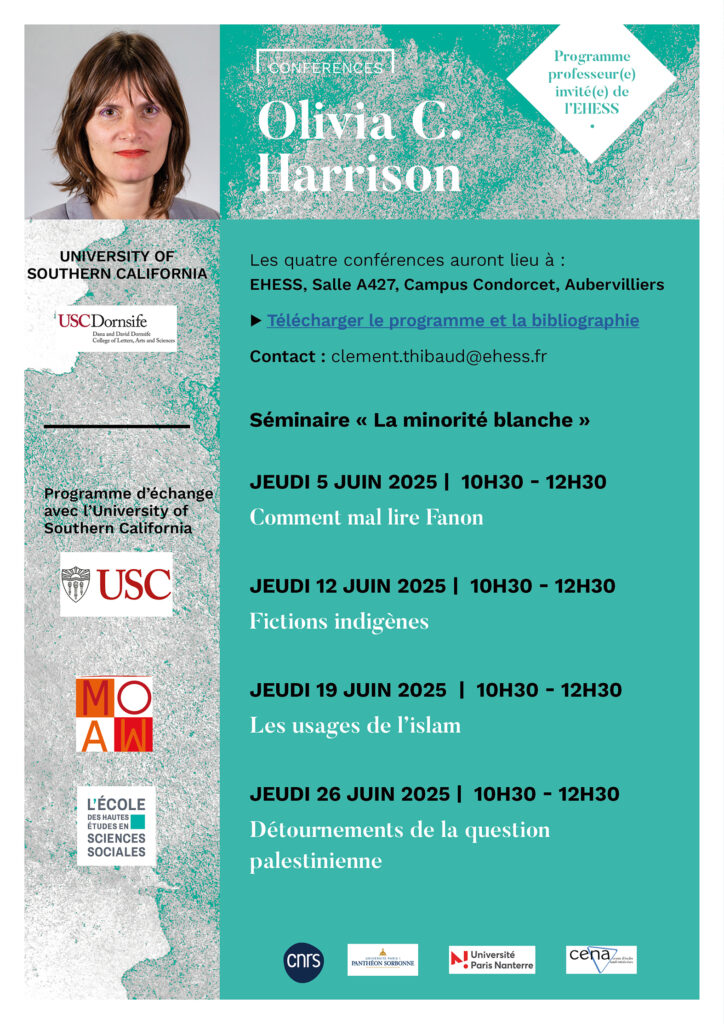
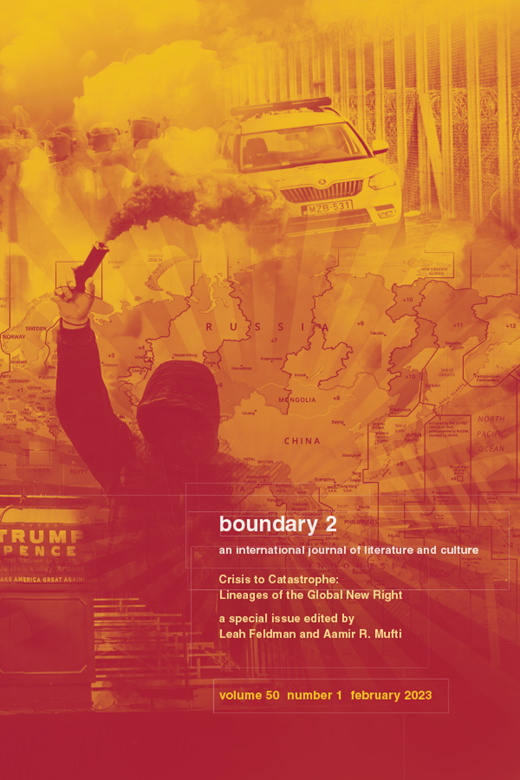

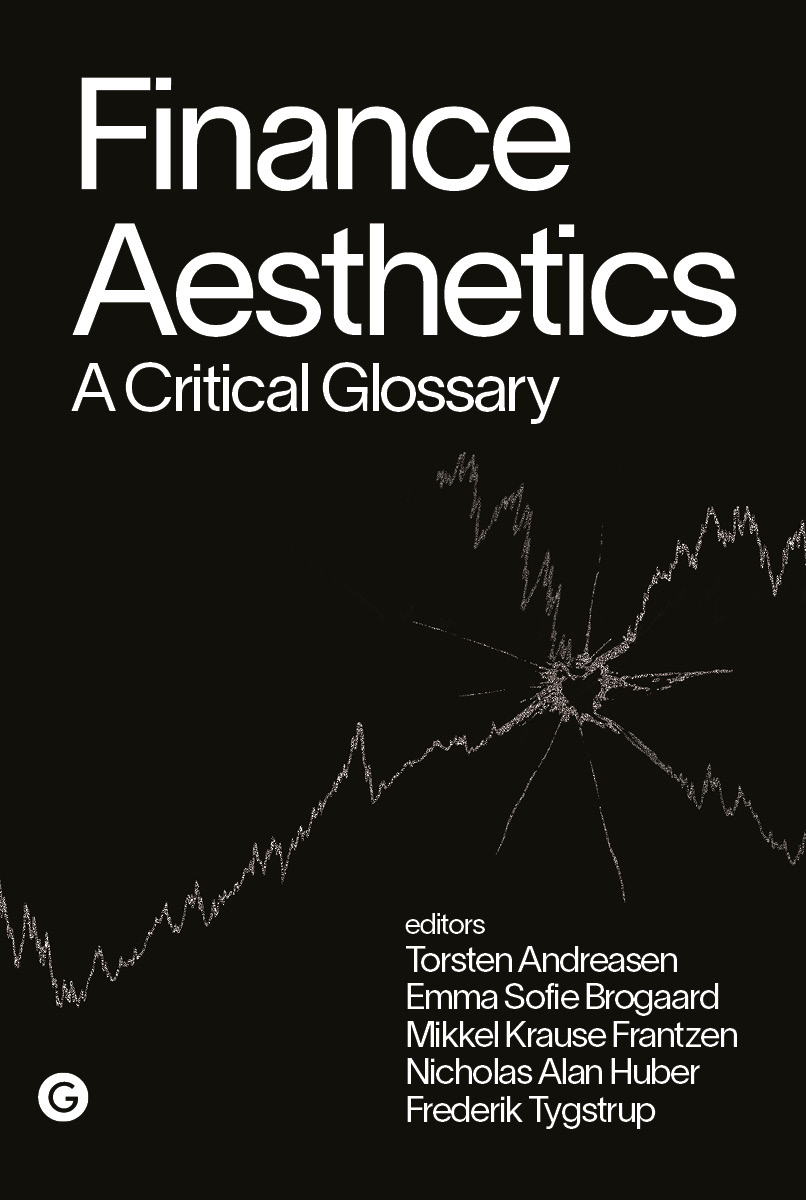

 Figure 1: Dhaka University.
Figure 1: Dhaka University.  Map 1.
Map 1.  Map 2.
Map 2. 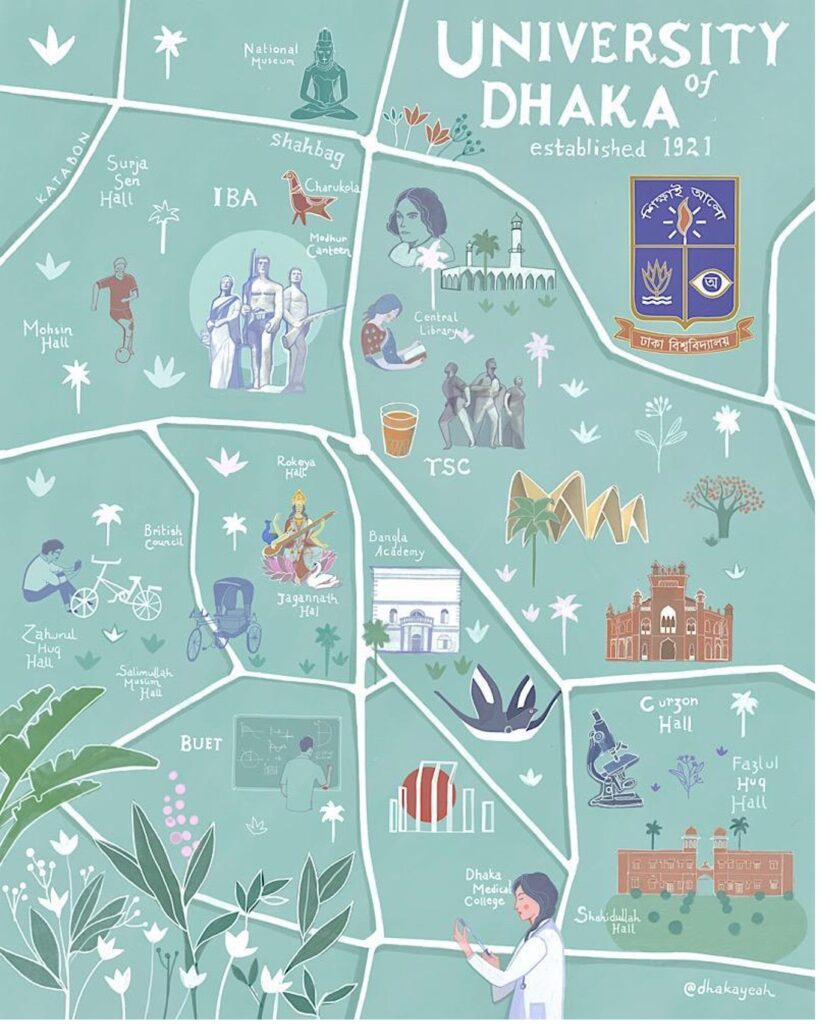



 Figure 5, ©JagoNews24. Scenes from Shapla.
Figure 5, ©JagoNews24. Scenes from Shapla.  Figure 6, ©Syed Zakir Hossain.
Figure 6, ©Syed Zakir Hossain. 


 Figure 10, ©amarbarta.
Figure 10, ©amarbarta.  Figure 11, ©Mehedi Haque.
Figure 11, ©Mehedi Haque. 
